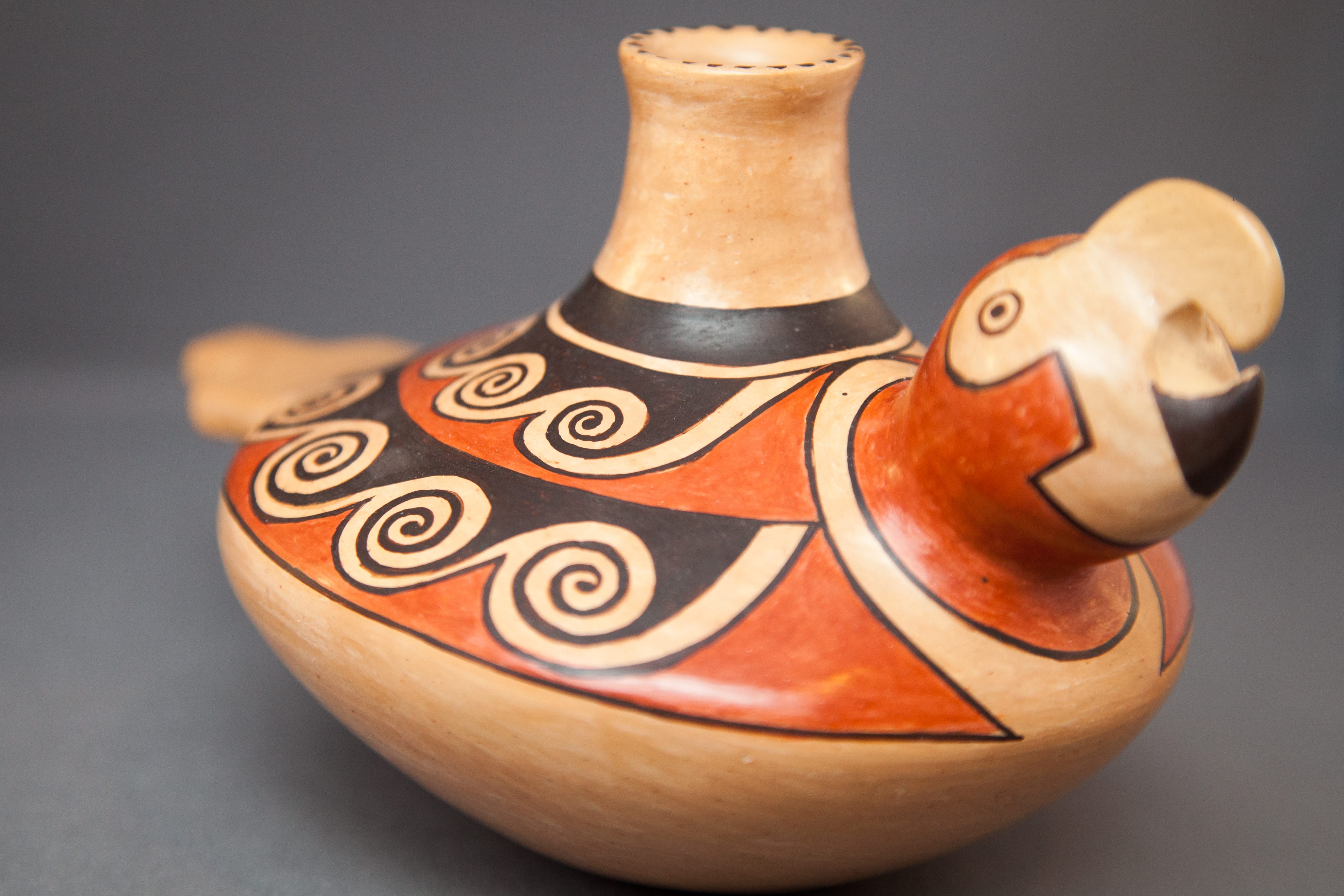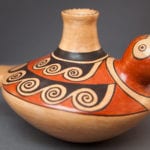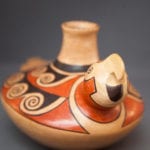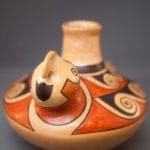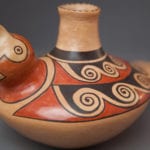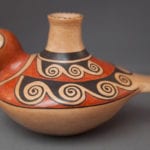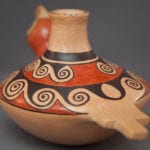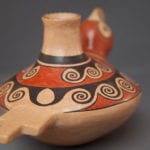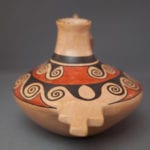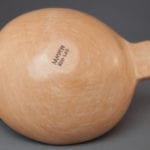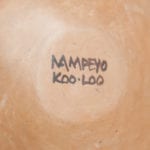This is a parrot with a pedigree.
Hopi women produced very similar effigies more than 600 years ago.
Judging from the size/weight of the effigy, the walls of this vessel are substantial but not thick, although the head may be solid. The blushing is of uniform color from the outdoor firing. The head extends about 2.0” beyond the body. The tubular opening rises about 1.5” and the tail extends about 1.0” from the body. I can imagine how the head and tail were formed, but do not understand how Rachael was able to close off the vessel with such a narrow opening.
The red and black colors are solid and vivid. A red cap covers the top of the head, ears and neck. Two red forms also spread across the upper and lower back. Each has scalloped indentations. Into these indentations are fit clockwise moving black spirals emerging from a common base. Three spirals form the top row, four the lower tier. To the rear, above the tail, a blocky red area separates the two sets of three spirals in the top row. A black pendant with an unpainted core provides this function above the tail for the lower spirals.
A thick black framing line is placed between the painted body and the unpainted vertical neck of the effigy. Twenty-one small black dots decorate the top edge of the effigy opening. The eyes and lower beak are also painted black.
All red areas have a thin black border. The lower half of the jar and the tail remain unpainted. An unpainted ring separates the painted head from the rest of the body. The black spirals float in an unpainted space. Above and below the black framing line, the neck of the jar is unpainted. These strategies of black-bordered red and unpainted surface work together to highlight elements of the design and make it vibrant.
The bird form encourages the viewer’s eye to sweep from beak to tail. The curvilinear black spirals attract the eye to the central body core and encourage a circularity of vision. Thus there is a tension between form and design that energizes this perky bird.
Rachel’s attractive bird was apparently directly inspired by an ancient example from Homol’ovi now in The Field Museum, Chicago (museum photo #A114268_10D; Catalog #72564) (Hays-Gilpin with Emory Sekaquaptewa, 2006:17 and Hays-Gilpin, Newsome and Sekaquaptewa, 2010:128). Somewhat similar bird figurines were also found at Awatovi:
“The creation of small pottery birds figurines appears to have been customary at Awatovi at all periods during its occupation, for specimens in that form were found in all the major pottery types. They were never numerous… The function of these vessels is not established (Watson Smith, 1971:142-143 and 414-415).” For a published example excavated at Awatovi, see plate CXII following page 620 in Fewkes (1898).
Parrots were the most frequently depicted birds in the kiva murals of Awatovi and Kawaika-a (Watson Smith, 1952: 183-187). Jake Koopee adapted these images in designing vase 2013-08 in this collection and a review of ancient depictions of macaw parrots can be found in that entry. Macaws were never native to Arizona but were traded alive from Central America and laboriously carried north, though perhaps they were later bred in Arizona to provide a local source.
Alexander Stephen shows a parrot figure made of wood in use on a Hopi altar in 1893 (1936: 791-792) but makes no mention of ceramic bird effigies. Similarly, Armin Geertz reviews Hopi alter iconography and illustrates six ceremonial bird figures (one a parrot) but none are ceramic (1987: plate IX and X).

